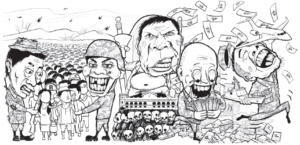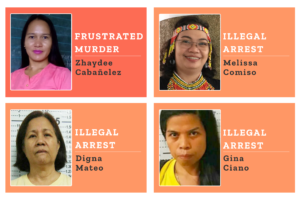How did the Alcantara family accumulate its wealth?

The Alcantara family has a big investment in the Tampakan Copper-Gold Project. This is only one of the businesses of the Alsons Consolidated Resources Incorporated (ACR or Alcantara Group), a consortium with diverse interests across Mindanao. They Alcantara group also owns a large share in the Australian company Indophil Resources NL. They also have businesses in industries including aquaculture, agriculture, construction, energy and logging.
The tycoon Alcantara family based in Davao City is close to and a supporter of Rodrigo Duterte. Tomas Alcantara, president of the Alcantara Group, is the 33rd richest Filipino with a net worth of $300 million (P15 billion).
The Alcantara family migrated to Mindanao in the 1950s. Through the reactionary government’s resettlement program, Conrado Alcantara, the family’s patriarch, was able to grab lands and open logging concessions in Sarangani (formerly a part of South Cotabato) and General Santos (formerly the district of Buayan and Dadiangas). The family’s properties expanded when after grabbing the ancestral lands of Moros and B’laans. Conrado also grabbed a ranch in Alabel and a logging concession in Davao del Norte.
The family’s wealth rapidly increased and his businesses expanded in Davao and other parts of Mindanao. In 1962, the family established Alsons Development and Investment Corporation, the first real estate developer in Davao City.
They were able to accumulate more capital by establishing the Iligan Cement Corporation in 1968. They benefitted from the cement-manufacturing machineries exported by Japan to the country as indemnification for the damages it dealt during World War 2.
Conrado Alcantara was a close friend and a crony of the late dictator Ferdinand Marcos. Through favors given him by the Malacañang, Iligan Cement expanded further during the 1980s amid an economic crisis and a tight competition among cement-manufacturing companies. Iligan Cement became the Alsons Cement Corporation which is currently a partner of Ramon Ang’s Holcim Philippines.
Marcos also gave Alsons a Timber License Agreement (TLA) which allowed it conduct its logging operations in thousands of hectares land in Davao del Norte. The company exports timber timber to China, US and other European countries. After the dictator was overthrown in 1986 and was replaced by Corazon Aquino, Paul Dominguez (son-in-law of Conrado Alcantara) rose to power and became an influential cabinet member.
Alsons TLA expired in 1989 but was only replaced with an Integrated Forest Management Agreement (IFMA) by the Aquino regime. It was awarded an approximately 45,000-hectare concession area which covered almost the whole of Talaingod and covered 19,000 hectares of Ata-Manobo ancestral lands. The Ata-Manobos fought against Alsons’ landgrabbing.
Using the IFMA and after acquiring a P350-million loan from the Asian Development Bank, Alsons was able to diversify in the mining and agribusiness industry.
The Alcantara family also invested in the aquaculture industry in the 1980s. The Alsons Aquaculture Corporation is the biggest exporter of fresh milkfish and other milkfish products. Its products are exported to the US, Canada, Australia, UK, Japan, Singapore, Hongkong and Micronesia.
The Alcantara Group was able to rapidly diversify in the power industry using the Electric Power Industry Reform Act of the reactionary government. It currently owns seven power plants in various parts of the country which are operated by its subsidiaries.


